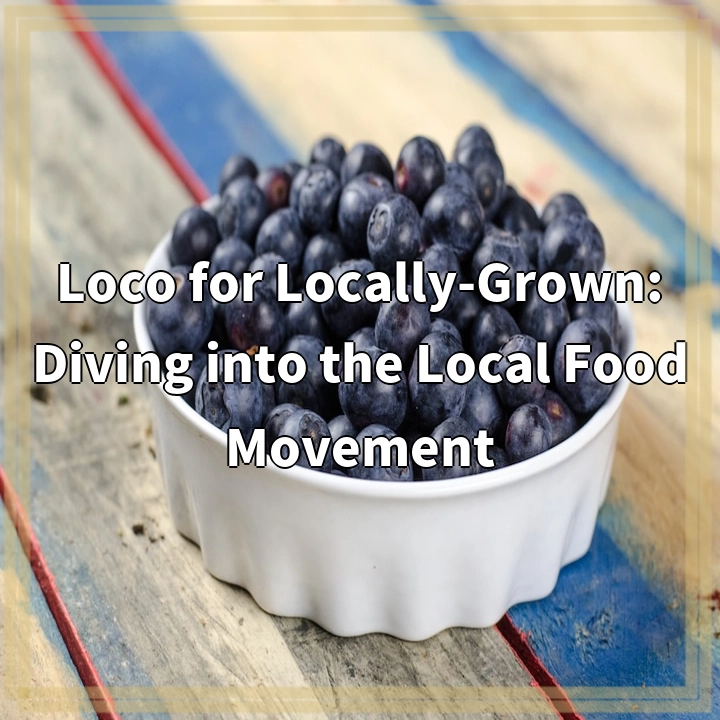Physical Address
304 North Cardinal St.
Dorchester Center, MA 02124
Physical Address
304 North Cardinal St.
Dorchester Center, MA 02124

The Local Food Movement is a growing trend that emphasizes the importance of consuming locally-sourced food. It promotes the idea of supporting local farmers, reducing the carbon footprint associated with transportation, and ensuring fresher and healthier food options for communities. By connecting consumers directly with farmers and local food producers, the movement aims to create a more sustainable and resilient food system.
One of the main challenges of the Local Food Movement is the limited availability of locally-grown produce. Due to seasonal variations and climate constraints, certain fruits and vegetables may only be available at specific times of the year. This can make it difficult for consumers to exclusively rely on local food sources, especially in regions with harsh winters or limited agricultural diversity.
Another obstacle facing the Local Food Movement is the higher cost associated with locally-grown and produced food. Small-scale farmers often face higher production costs, such as organic certifications, sustainable farming practices, and fair labor wages. These expenses are reflected in the prices of local products, making them less affordable for some consumers compared to mass-produced, imported alternatives.
While the Local Food Movement offers many benefits, it can sometimes come with limitations in terms of variety and convenience. Local farmers may focus primarily on staple crops, which means less common or exotic produce may be harder to find locally. Additionally, the convenience of accessing a wide variety of products year-round, as offered by supermarkets, may be compromised when relying solely on local sources.
The logistics of distributing locally-sourced food presents its own set of challenges. Unlike large-scale industrial agriculture, which benefits from efficient transportation systems and extensive distribution networks, local farmers may struggle with limited infrastructure and distribution options. This can result in difficulties in reaching wider markets and connecting with urban areas, where demand for local products may be higher.
A significant issue facing the Local Food Movement is the educational gap and lack of consumer awareness. Many people are not familiar with the benefits of consuming local food or the negative impacts of the global industrial food system. This lack of awareness hinders the growth of the movement and its ability to make a significant ecological and economic impact on the food system.
Local food systems often face policy and regulatory challenges that can pose barriers to their success. Some regulations favor large-scale agricultural systems and hinder the growth of local food initiatives. For example, zoning laws may restrict small-scale farming practices within residential areas, limiting the ability to produce and sell local food in urban environments.
As the Local Food Movement gains popularity, there is a need to scale up production to meet the growing demand. This poses significant challenges, especially for small-scale farmers who may lack the resources and infrastructure to expand their operations. Scaling up while maintaining the principles of sustainability and fair trade can be a complex task that requires strategic planning and support from consumers and policymakers.
Promoting local food education is crucial for increasing consumer awareness and understanding of the benefits of locally-sourced food. Community workshops, cooking demonstrations, and partnerships with schools or local organizations can be effective ways to educate consumers and encourage the demand for local products.
Providing financial support and resources to small-scale farmers can help overcome some of the challenges they face. This includes offering grants or low-interest loans for infrastructure development, improving access to land for farming, and providing training and technical assistance to enhance their production capabilities.
Improving the distribution infrastructure for local food systems is vital. Developing regional food hubs can serve as central distribution centers for local farmers, connecting them with consumers, restaurants, and grocery stores. Investing in transportation logistics and cold storage facilities can also help address the challenges of delivering local food to urban areas more efficiently.
Engaging in advocacy efforts to shape policies and regulations that favor local food systems is important. This includes advocating for zoning laws that allow for urban farming, supporting fair trade policies, and promoting the growth of local farmers’ markets and community-supported agriculture (CSA) programs.
Fostering collaborations between local farmers, restaurants, and grocery stores can help expand market opportunities. Forming partnerships and establishing supply chains can ensure consistent buyers for farmers, while businesses can access fresh, local products to meet consumer demands. This can also lead to the development of farm-to-table initiatives, where restaurants prioritize sourcing ingredients from local producers.
Investing in research and innovation within the local food sector is essential for its long-term growth. Supporting agricultural research that focuses on sustainable farming practices, crop diversification, and resource efficiency can help enhance the productivity and viability of local food production. Promoting innovative technologies and solutions, such as vertical farming and hydroponics, can also contribute to the advancement of local food systems.
If you’re wondering where the article came from!
#